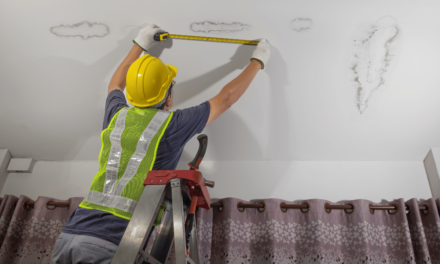As the temperature begins to drop in Melbourne, homeowners must take proactive steps to ensure their homes are ready for the winter months ahead. With the city’s variable weather patterns and potential for single-digit temperatures, proper preparation is crucial to maintaining a warm, comfortable, and energy-efficient living space. But have you ever wondered how to effectively prepare your home for the winter season in Melbourne? The secret lies in a strategic approach to home insulation, window treatments, heating system optimization, and harnessing natural warmth.
Key Takeaways
- Prioritize home insulation to retain heat and reduce energy costs
- Seal gaps and cracks around windows and doors to prevent drafts
- Utilize heavy curtains and pelmets to maximize the efficiency of window treatments
- Maintain and service heating systems to ensure optimal performance
- Open curtains during the day to let in natural sunlight and warmth
Insulate Your Home Effectively
Ensuring your home is properly insulated is crucial for staying comfortable and energy-efficient all year round. Investing in quality home insulation can make a significant difference in retaining heat during the chilly Melbourne winters.
Install Insulation in Your Attic
Up to 35% of a home’s warmth can be lost through the roof, making attic insulation a vital component of an energy-efficient home. While professional insulation installation may seem costly upfront, it can save you hundreds on your energy bills in the long run. Proper attic insulation helps retain heat, reducing your reliance on heating systems and cutting your carbon footprint.
Seal Gaps and Cracks
In addition to insulating your attic, sealing any small cracks and gaps that allow cold air to seep in is equally important for retaining heat. Use products like door seals, silicone sealant, and door snakes to effectively block drafts and improve your home’s energy efficiency. Eliminating these air leaks will help you maximize the benefits of your home insulation and maintain a cozy, comfortable indoor environment.
“Properly installed insulation reduces reliance on air conditioning, leading to energy savings and reduced environmental impact.”
By combining attic insulation and sealing air leaks, you can create a more energy-efficient home that retains heat better, keeping you warm and comfortable during the chilly Melbourne winters. This investment in home insulation will pay dividends in the long run, both in terms of energy savings and increased home comfort.
Utilize Window Treatments
When it comes to insulating your home for the winter, window treatments play a crucial role. Up to 40% of the heat in your home can escape through uncovered windows. Installing heavy, lined curtains that extend below the window frame can significantly insulate the windows and help retain the warmth inside.
Use Heavy Curtains
Heavy, lined curtains are an effective way to improve the insulating properties of your windows. These curtains create an additional layer of protection, trapping the warm air inside and preventing it from escaping. Be sure to choose curtains that are long enough to reach the floor, as this helps to seal off the window frame and minimize drafts.
Install Pelmets
Pelmets, either boxes that sit over the curtain rod or “invisible pelmets” that sit above the curtain rod, also do an excellent job of stopping cold air from coming into the room. These window treatments work in tandem with the heavy curtains to create an effective barrier against heat loss. By installing pelmets, you can further enhance the insulating properties of your window treatments and improve the overall energy efficiency of your home.
Utilizing a combination of heavy curtains and pelmets is a simple and cost-effective way to improve the insulation of your home’s windows. These window treatments work together to trap heat, reducing your reliance on energy-intensive heating systems and lowering your energy bills. By investing in these simple upgrades, you can enhance the comfort and energy efficiency of your home during the winter months.
Regulate Temperature Efficiently
Proper temperature regulation is crucial for both your comfort and energy efficiency at home. Maintaining a comfortable indoor temperature, typically around 20°C (68°F), can help you feel cozy without unnecessarily cranking up the heating. If your heating system lacks a programmable thermostat, use a separate thermometer to monitor the temperature in your living areas and adjust the heating accordingly.
In addition to adjusting your thermostat, putting on an extra layer of clothing can help you stay warm without relying heavily on your heating system. This energy-efficient approach can translate to lower utility bills and a more sustainable home environment.
Set Thermostat to Comfortable Levels
Heating your home to a comfortable temperature is essential for maintaining a cozy and energy-efficient indoor climate. Aim to keep your thermostat settings between 20-22°C (68-72°F) during the day, and lower the temperature a few degrees at night or when you’re away from home. This simple adjustment can result in significant energy savings without compromising your home comfort.
Remember, small changes in thermostat settings can have a big impact on your energy consumption and heating costs. By finding the right balance between comfort and efficiency, you can enjoy a warm and inviting home while minimizing your environmental footprint.
Optimize Heating Systems
Maintaining and servicing your home’s heating systems is crucial for ensuring optimal efficiency and performance throughout the winter months. Regular professional maintenance of your heaters can lead to significant energy savings and help keep your home warm and comfortable all season long.
Maintain and Service Heaters
Getting your heaters professionally serviced at least every two years is a must for maintaining their efficiency. During a service visit, technicians will clean any filters or accumulated dust, inspect for proper airflow, and ensure all components are functioning correctly. Properly maintained heaters will run more efficiently, using less energy to heat your home.
In addition to professional servicing, you can take some simple steps to keep your home’s heating systems in top shape. Regularly cleaning or replacing air filters can improve airflow and reduce strain on the system. Clearing any debris or blockages around outdoor heating units will also help them operate at their best.
| Heating System Maintenance Checklist |
|---|
|
By keeping your home’s heating systems well-maintained and serviced, you can enjoy the benefits of energy-efficient heating and improved home comfort all winter long.

Harness Natural Warmth
Harnessing the power of natural heating can be a simple and cost-effective way to keep your Melbourne home warm during the winter months. One of the easiest strategies is to open your curtains and let the sun’s radiant energy into your living spaces.
Open Curtains for Sunlight
When sunlight enters a room, it is transformed into infrared radiation or radiant heat, which doesn’t travel through glass as easily as the initial UV radiation. By opening your curtains, especially on north-facing and west-facing windows, you can allow this free solar energy to warm your home, reducing the need for artificial heating and cutting down on your energy bills.
To maximize the benefits of natural heating, follow these tips:
- Open curtains and blinds on sunny days to let the warmth from the sun’s rays into your home.
- Close curtains and blinds at night to retain the heat and prevent it from escaping through the windows.
- Ensure your windows are clean and unobstructed to allow maximum sunlight to enter the room.
- Consider installing pelmets or valances above your windows to further enhance the insulating properties and prevent heat loss.
By harnessing the power of natural heating through passive solar strategies, you can reduce your reliance on artificial heating, improve your home’s energy efficiency, and lower your overall heating costs during the Melbourne winter.
“Harnessing the sun’s natural warmth is one of the simplest and most cost-effective ways to keep your home comfortable during the winter.”
How to Prepare Your Home for Melbourne’s Summer
As the scorching Melbourne summer approaches, it’s crucial to take proactive steps to ensure your home stays comfortable and energy-efficient. From installing the right insulation to optimizing your cooling systems, there are several strategies you can implement to beat the heat.
Insulate Strategically
Proper insulation is key to keeping your home cool during the summer. Start by ensuring your attic is well-insulated, as this can prevent heat from seeping into your living spaces. Additionally, consider insulating your walls to reduce heat transfer and maintain a comfortable indoor temperature.
Leverage Window Treatments
Curtains and blinds play a significant role in managing sunlight and heat gain. Install blackout curtains or invest in pelmets to block out the sun’s rays and keep your rooms cooler. Strategically positioning these window treatments can make a noticeable difference in your home’s overall temperature.
Optimize Cooling Systems
Regularly maintain and service your air conditioning units to ensure they operate at peak efficiency. Consider upgrading to a more energy-efficient model, which can provide improved comfort and lower your energy bills. Additionally, utilize ceiling fans to circulate the air and supplement your cooling system.
Embrace Natural Cooling
Take advantage of Melbourne’s cooler evenings by opening up your home to let in the refreshing breeze. You can also plant trees or install green roofs and walls to provide natural insulation and shading, reducing your reliance on air conditioning.
| Summer Home Preparation Checklist |
|---|
|
By implementing these strategies, you can effectively prepare your home for the summer heat and ensure a comfortable living environment throughout the season.

“Proper preparation is the key to a comfortable and energy-efficient summer home.”
Insulate Hot Water Pipes
Insulating your home’s hot water pipes is a simple and cost-effective way to improve energy efficiency and reduce heat loss. Wrapping external hot water pipes with insulating tape or other insulation materials can help retain the heat from your hot water tank, ensuring you use less energy to get hot water to your taps. This easy DIY project can lead to significant savings on your water heating costs.
According to the Building Code of Australia (BCA), there are minimum standards for pipe insulation in new homes. Pipe lagging can be made from various materials like foam, vinyl, polyethylene, or glass wool, sometimes including a reflective foil layer. Investing in pipe insulation is generally inexpensive, and the energy savings can provide genuine cost savings annually.
Properly installed pipe insulation can prevent heat loss through the pipe walls during water transport, leading to savings on your electricity and water bills. When setting the thermostat for hot water systems, storage systems should be set at a minimum of 60 degrees Celsius to prevent bacteria growth, and continuous flow systems should be set no higher than 50 degrees Celsius.
The positioning of the hot water system in relation to the main outlets can also impact efficiency by reducing heat loss through the pipes and minimizing material costs. Additionally, water-saving devices such as temperature controllers, cold water diverters, and recirculation systems can help reduce water wastage from hot water systems.
Consider hiring professionals for hot water system insulation installation to ensure correct application and maximize your comfort and savings. Insulating your home’s hot water pipes is a simple and effective way to enhance energy efficiency and reduce your water heating costs this winter.
| Insulation Material | R-Value | Thermal Resistance |
|---|---|---|
| Foam | 3.0 – 5.0 | Moderate |
| Vinyl | 2.0 – 4.0 | Moderate |
| Polyethylene | 4.0 – 6.0 | High |
| Glass Wool | 3.0 – 4.0 | Moderate |
The R-value of insulation determines its thermal resistance, with higher R-values indicating greater insulating capabilities. Flexible foam and foam-foil pipe insulation are common materials used for insulating plumbing pipes in homes.
Dress for Warmth
One of the easiest and most budget-friendly ways to stay warm in your home during the winter is to focus on warming yourself rather than your entire house. Wearing warm layers like a cozy sweater, socks, and slippers can help you feel comfortable without the need to crank up the heating and incur high energy costs. This simple approach to dressing for the weather can be a highly effective way to stay warm and reduce your home’s energy consumption.
Melbourne’s unpredictable climate often requires layering clothing to adapt to the changing conditions throughout the day. A scarf, for instance, can provide valuable protection from the sun and cold, helping you stay comfortable as the weather shifts. Similarly, wearing light, long-sleeved cotton shirts or a lightweight jacket can be an efficient way to regulate your body temperature and minimize the need for excessive heating.
By prioritizing your personal warmth through strategic clothing choices, you can enjoy the comfort of your home without sacrificing energy efficiency. This approach not only helps you stay cozy during the chilly Melbourne winters but also contributes to reducing your overall heating costs, making it a practical and cost-effective solution for staying warm.










